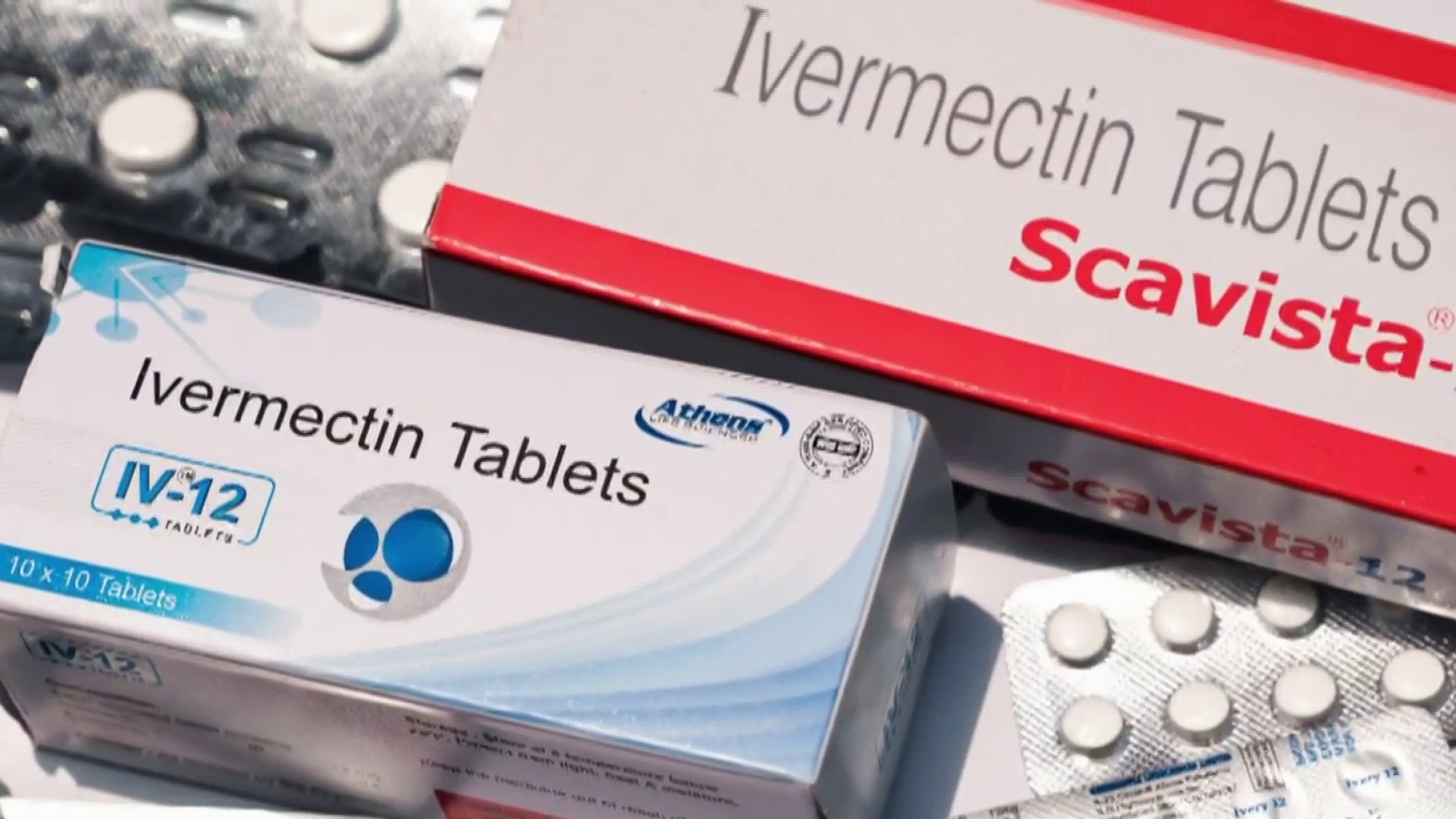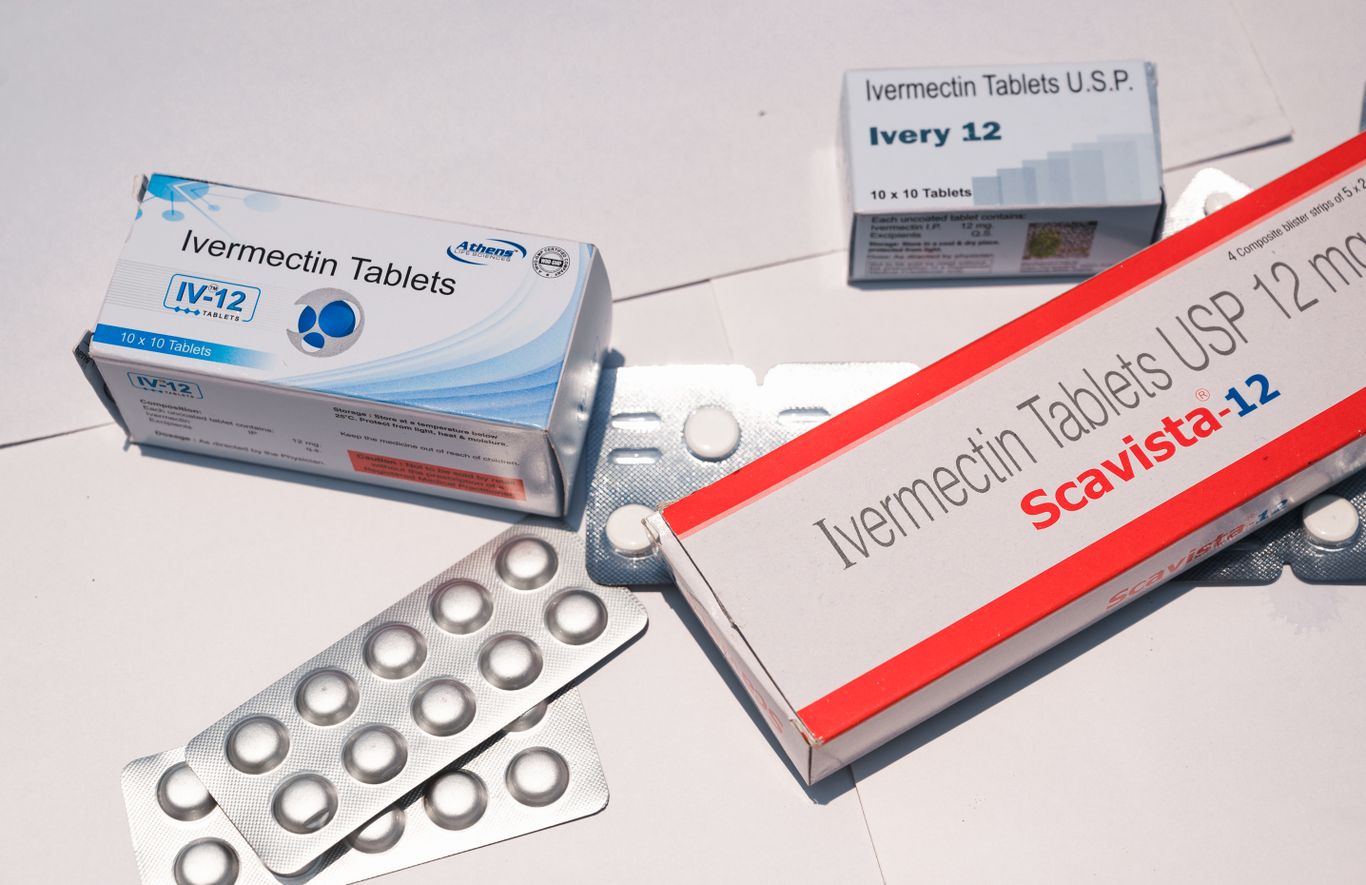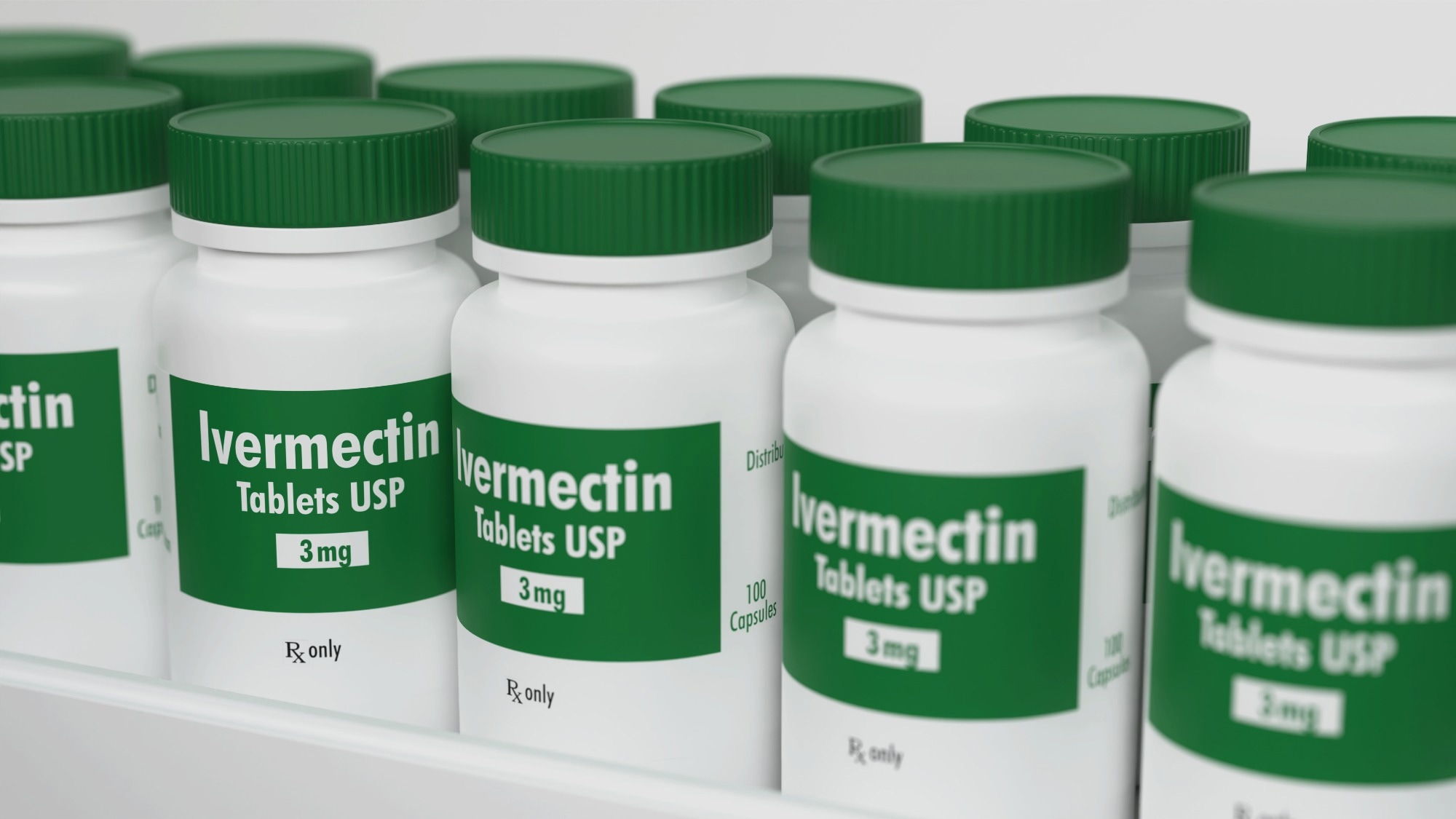Ivermectin is a widely prescribed antiparasitic drug approved by the World Health Organization to treat infections caused by worms, head lice, and scabies. It is a highly safe and effective drug to use in humans. Ivermectin is a derivative of Avermectin used to treat parasitic infections. Ivermectin is reported to possess a growth-inhibitory effect on cancer cells through the initiation of mitochondrial dysfunction and oxidative damage. Many searches demonstrate that Ivermectin can be a cure for cancer.

Let us understand more about Ivermectin and its effect on cancer.
Ivermectin and Cancer Highlights
- Ivermectin successfully overpowers the proliferation and metastasis of cancer cells and encourages cancer cell death at doses that are harmless to normal cells.
- Ivermectin has shown excellent usefulness against conventional chemotherapy drug-resistant cancer cells and converses multidrug resistance.
- Ivermectin paired with other targeted drugs or chemotherapy drugs has shown strong notable effects on cancer.
- The structure of crosstalk positioned on PAK1 kinase shows the mechanisms of how Ivermectin regulates multiple signaling pathways.
- Ivermectin has been used to treat parasitic infections in humans for several years and can speedily enter clinical trials to treat tumors.
What Is Ivermectin And Why Is It Prescribed?
Ivermectin is derived from Avermectin, an extremely active broad-spectrum antiparasitic agent. It belongs to the anthelmintic class of drugs. Ivermectin helps prevent complications in patients with a suppressed immune system who are experiencing roundworm infection. Ivermectin works by initially paralyzing and then killing the parasites.
Ivermectin tablets are prescribed for various parasitic infections including river blindness, threadworm infestation, roundworm infestation, filariasis, whipworm infestation, loiasis, and tropical eosinophilia. Topical formulations of Ivermectin are used to treat skin conditions such as rosacea and head lice.
Ivermectin Dosage
Ivermectin for humans is approved at extremely specific doses for the treatment of parasitic worms. Ivermectin treatment is prescribed as a short-term regime. The dosage of this medicine depends on the nature of the disease and the age of the sufferer. Usually, Ivermectin is prescribed as a single-dose treatment and the dose may be increased if the symptoms persist.
It is recommended to take Ivermectin tablets on an empty stomach. Swallow the tablet with a full glass of water. Take this drug exactly as suggested by your healthcare professional to clear the infection completely. In certain cases, your doctor may prescribe an additional dose after 3 to 12 months depending on your condition and response to the medicine.
Ivermectin and Cancer

One of the most life-threatening diseases is malignant tumors that impend human health as well as social development. The most typical treatment method used to treat malignant tumors is chemotherapy. Ivermectin controls the tumor microenvironment and mediates immunogenic cell death giving a new direction for research to explore this drug more.
In current years several new chemotherapeutic medications have entered the market but tumor cells are susceptible to drug resistance and these may cause some obvious adverse reactions. That is why the development of new medications that can beat resistance, enhance anti-cancer activity, and diminish possible side effects is an urgent issue to be resolved in chemotherapy.
Drug repositioning is a crosscut way to hasten the expansion of anticancer medications. The broad-spectrum antiparasitic drug Ivermectin is broadly used for parasitic control and has several benefits that make it evident that it is worth developing as a potential anticancer drug.
Ivermectin particularly constrains the spread of tumors at a dose that is safe for ordinary cells. This drug has been broadly used to treat many human conditions for years. Different pharmacological characteristics of Ivermectin such as drug metabolism properties and long and short-term toxicological effects are highly evident.
When the Ivermectin dose was increased to 2 mg/kg in healthy volunteers, no severe adverse reactions were noticed. On the other hand in animals including rabbits, rats and mice the tests found that the median fatal dose of Ivermectin was 10 to 15 mg/kg.
Ivermectin has evidently demonstrated good permeability in tumor tissues. Still, there are no sufficient clinical trials performed that can make sure that Ivermectin is an anticancer drug. There are still some issues that need to be researched and resolved before using Ivermectin in clinics as an anticancer medication.
Though a considerable number of research outcomes show that Ivermectin influences multiple signaling pathways in tumor cells and prevents tumor cell proliferation, Ivermectin may take anti-tumor action in tumor cells through definite targets. However, till now no meticulous target of this drug’s action has been found.
Ivermectin controls the tumor microenvironment, prevents tumor cell development, and lessens tumor angiogenesis and metastasis. However, no clear and systematic conclusions were found regarding the associated molecular mechanism. That is why in future research it is essential to discover the particular mechanism of Ivermectin involved in controlling the tumor microenvironment, metastasis, and angiogenesis.
Ivermectin can encourage a mixed death mode including apoptosis, pyroptosis, and autophagy depending on the condition of cells and the type of cancer. Evaluation of the predominant contributor to tumor cell death and each type of cancer and environment will be extremely important in identifying the efficacy of Ivermectin-based treatments.
Ivermectin can boost the sensitivity of chemotherapeutic drugs and decrease the resistance. So, Ivermectin should be used along with other medications to attain the best impacts, while the exact medication schedule used to pair Ivermectin with other medications needs to be explored.
Until now, most of the anticancer studies conducted on the avermectin family have been focused on avermectin and Ivermectin. As per some previous reports, the other drugs from the avermectin family such as Doramectin and Selamectin also possess anticancer properties. With the expansion of avermectin family derivatives which are proven to be more effective and less toxic, appropriate research on the anticancer mechanisms still holds great value.
Reports from existing studies are enough to demonstrate the inordinate potential of Ivermectin and its scenarios as a new promising anticancer medication after some more research. Many researchers believe that in the future, Ivermectin can be further grown and launched clinically as a part of new effective cancer treatment.
Role Of Ivermectin In Various Types of Cancer Cells
Breast Cancer Cells
It is a malignant tumor formed by a gene mutation in breast epithelial cells caused by many carcinogens. The cases of breast cancer have increased every year globally and breast cancer has become one of the most common malignant tumors worldwide with the highest incidence. On average, every 18 seconds, a new case of breast cancer is diagnosed worldwide.
After Ivermectin treatment during breast cancer cell experiments, the proliferation of several breast cancer cell lines was significantly reduced including MCF-7, MCF-10, and MDA-MB-231. The mechanism involved in targeting breast cancer cell lines was the inhibition of the Akt/mTOR pathway to persuade autophagy and p-21-activated kinase 1.
Moreover, Diao’s study demonstrated that Ivermectin could inhibit the propagation of the canine breast tumor cell lines such as CMT7364 and CIPp by obstructing the cell cycle without cumulating apoptosis. The mechanism of Ivermectin may associated with the inhibition of the Wnt pathway.
Triple-Negative Breast Cancer (TNBC)
Triple-negative breast cancer is the type of breast cancer that is negative for the progesterone receptor, estrogen receptor, and human epidermal growth factor receptor 2. It is the most destructive type of breast cancer with the worst prognosis. Additionally, currently, there is no clinically applicable therapeutic medication is available for this type of cancer.
A drug screening study performed with TNBC demonstrated that Ivermectin could be utilized as a SIN- SIN-interaction domain impersonator to particularly block the communication between SID and paired a -helix2. Additionally, Ivermectin controlled the expression of the epithelial-mesenchymal transition linked gene -cadherin to reestablish the sensitivity of triple-negative breast cancer cells to Tamoxifen. It implies that Ivermectin works as an epigenetic regulator in cancer treatment.
Digestive System Cancer Cells
Digestive system cancer is among the most common malicious tumors across the world. In the past few years, millions of patients have been diagnosed with gastric cancer across the globe. Nambara’s study demonstrated that Ivermectin could suggestively constrain the propagation of gastric cancer cells in vivo and in vitro. It also showed that the inhibitory impact of Ivermectin is based on the expression of Yes-associated protein 1 (YAP1).
Gastric cancer cell lines SH-10-TC and MKN1 have higher YAP1 expression in comparison to MKN7 and MKN28 cells. So MKN1 and SH-10-TC cells are sensitive to Ivermectin while MKN7 and MKN28 are not. YAP1 has an oncogenic role in tumorigenesis signifying the possibility of Ivermectin use for cancer treatment as a YAP1 inhibitor.
In a study performed to screen Wnt pathway inhibitors, IVM inhibited tumor growth in several cancers such as the colorectal cancer cell lines CC14, CC36, DLD1, and Ls174 T, and encouraged apoptosis by obstructing the Wnt pathway.
After Ivermectin involvement the expression of caspase-3 in DLD1 and Ls174 T cells amplified signifying that Ivermectin has an apoptosis-inducing effect and inhibits the expression of the downstream genes AXIN2, ASCL2, and LGR5 in the Wnt pathway. However, the precise molecular target of ivermectin that impacts the Wnt pathway still needs to be explored.
Urinary System Cancer Cells
Renal cell carcinoma is a deadly malignant tumor of the urinary system that is derived from renal tubular epithelial cells. The clinical treatment of this type of cancer is not satisfactory and its sickness has increased by around 2% every year worldwide.
Studies showed that Ivermectin can inhibit the propagation of five renal cell carcinoma cell lines without harming the growth of ordinary kidney cells. Its mechanism can be associated with the induction of mitochondrial dysfunction. Cancer cells exposure to Ivermectin can be induced to create ROS generation and diminish the membrane potential of mitochondria.
Ivermectin can successfully diminish the potential of the mitochondrial membrane and inhibit mitochondrial respiration and ATP production. The existence of mitochondrial fuel acetyl-L-carnitine and antioxidant N-acetyle-L-cysteine can reverse Ivermectin-induced inhibition.
As per the animal studies, the immunohistochemical outcomes for Ivermectin-treated tumor tissues demonstrated that the expression of the mitochondrial stress marker HEL was meaningfully increased and the outcomes were constant with those cells’ experiments.
Prostate Cancer Cells
Prostate cancer is a malevolent tumor resulting from prostate epithelial cells. Nappi’s experiment demonstrated that Ivermectin or IVM could increase the drug activity of the anti-androgen drug Enzalutamide in the prostate cancer cell line LNCaP and converse the resistance of the prostate cancer cell line PC3 to docetaxel.
Fascinatingly, Ivermectin also reinstated the sensitivity of triple-negative breast cancer to the anti-estrogen drug Tamoxifen which indicates the possibility of Ivermectin to be used for endocrine treatment. Additionally, Ivermectin was found to possess a good inhibitory outcome on the prostate cancer cell line DU145.
Hematological Cancer
Leukaemia is a malignant clonal disease that occurs because of abnormal hematopoietic stem cells. In an experiment performed to screen possible drugs for leukemia treatment, Ivermectin favorably killed leukemia cells at low concentrations without affecting normal hematopoietic cells.
The mechanism was associated with the increase in the invasion of chloride ions into the cells by Ivermectin resulting in hyperpolarization of the plasma membrane and initiation of reactive oxygen species creation. It was also proved that Ivermectin has a synergistic outcome with daunorubicin and cytarabine in leukemia treatment.
Wang’s treatment states that Ivermectin can particularly persuade mitochondrial dysfunction and oxidative stress leading to chronic myeloid leukemia K562 cells to experience increased caspase-dependent apoptosis compared with normal bone marrow cells. It was also proved that Ivermectin inhibits tumor cell proliferation in a dose-dependent style and Dasatinib had enhanced efficacy.
Reproductive System Cancer Cells
Cancer of a woman’s reproductive organs is called gynecologic cancer. The most common types of gynecologic cancer are ovarian and cervical cancer.
Cervical Cancer
Cervical cancer is among the most common types of gynecological malignancies. Approximately 530000 cases and around 270000 deaths are reported every year across the globe. Most cases of cervical cancer are because of HPV (human papillomavirus) infection.
Ivermectin has been significantly found to inhibit the expansion and migration of HeLa cells and encourage apoptosis. After Ivermectin treatment, the cell cycle of HeLa cells was jammed at the GI/S phase and the cell demonstrated typical morphological alterations associated with apoptosis.
Ovarian Cancer Cells
Ovarian Cancer is a malevolent cancer that does not show early clinical symptoms and has a deprived therapeutic response. It has a 5-year survival rate in around 47% of patients after diagnosis. As per Hashimoto’s study, Ivermectin inhibited the proliferation of many ovarian cancer cell lines, and the mechanism was associated with the inhibition of PAK1 kinase.
Can Ivermectin inhibit KPNB1 protein in ovarian cancer? In a study performed to screen possible targets for ovarian cancer treatment using a shRNA library and a CRISPR/Cas9 library, the oncogene KPNB1 was spotted. IVM could block the cell cycle and induce cell apoptosis through a KPNB1-dependent mechanism in ovarian cancer. Ivermectin and Paclitaxel have a synergistic effect on ovarian cancer and paired treatment in in vivo experiments entirely inhibited tumor growth.
Moreover, as per the report by Zhang, Ivermectin can increase the effectiveness of Cisplatin to enhance epithelial ovarian cancer treatment, and the mechanism is associated with the inhibition of the Akt/m TOR pathway.
Brain Glioma
The most common cerebral tumor is brain glioma. Every year around 100,000 people are detected with glioma across the world. The deadliest glioma is glioblastoma with a median survival time of just 14 to 17 months.
Studies demonstrated that IVM inhibited the proliferation of human glioblastoma U87 and T98 G cells in a dose-dependent way and persuaded apoptosis in a caspase-dependent manner. It was associated with the induction of mitochondrial dysfunction and oxidative stress.
Furthermore, IVM could induce apoptosis of microvascular endothelial cells of the human brain and significantly constrain angiogenesis. These outcomes demonstrated that Ivermectin has the potential to fight tumor angiogenesis and tumor metastasis. As per one more study, Ivermectin inhibited the growth of U251 and C6 glioma cells by preventing the Akt/mTOR pathway.
In gliomas, miR-21 can control the Ras/MAPK signaling pathway and increase its impact on invasion and proliferation. The DDX23 helicase activity impacts the expression of miR-12. Ivermectin can inhibit the DDX23/miR-12 signaling pathway by touching the activity of DDX23 helicase, thus inhibiting malignant biological behaviors.
It showed that Ivermectin may be a probable RNA helicase inhibitor and a novel agent for the treatment of tumors. However, we must highlight that because Ivermectin can not successfully pass the blood-brain barrier, the vision of the use of Ivermectin for glioma treatment is not expected.
Respiratory System Cancer Cells
Nasopharyngeal carcinoma is another type of malignant tumor derived from the epithelial cells of the nasopharyngeal mucosa. The occurrence is visibly familial and regional and EBV (Epstein-Barr virus) is closely associated.
As per the study performed to screen medications for nasopharyngeal cancer treatment, Ivermectin pointedly repressed the development of nasopharyngeal carcinoma in nude mice. The doses administered were non-toxic to normal thymocytes.
Additionally, Ivermectin has also shown a cytotoxic effect on various nasopharyngeal cancer cells in vitro. The mechanism is associated with the lessening of PAK1 kinase activity to inhibit the MAPK pathway.
Lung Cancer Cells
Lung cancer has the highest mortality and morbidity among all types of cancers. Nishio noticed that Ivermectin can suggestively prevent the proliferation of H1299 lung cancer cells by inhibiting YAP1 activity.
Nappi’s research also demonstrated that Ivermectin paired with Erlotinib attained a synergistic killing effect by controlling EGFR activity in HCC827 lung cancer cells. Moreover, Ivermectin can probably decrease the metastasis of lung cancer cells by constraining EMT.
Melanoma Tumor Cells
Melanoma is a major malignant skin tumor with an extreme mortality rate. Medications targeting BRAF mutations including Dabrafenib, Vemurafenib, and PD-1 monoclonal antibodies have remarkably enhanced the prognosis of melanoma.
Gallardo treated melanoma cells with Ivermectin and noticed that it could effectively prevent the activity of melanoma. Ivermectin has also shown activity against BRAF wild-type melanoma cells and when combined with Dapafinib, it can considerably boost anti-tumor activity.
Moreover, it has been proven that PAK1 is the main target of Ivermectin which facilitates its anti-melanoma activity. Ivermectin can also diminish the lung metastasis of melanoma in animal studies. Deng discovered that Ivermectin can activate the nuclear translocation of TFE3 and encourage autophagy-dependent cell death by dephosphorylation of TFE3 in SK-MEL-28 melanoma cells. However, NAC upturned the effect of Ivermectin that specified that Ivermectin increased TFE3-dependent autophagy through the ROS signaling pathway.
Anticancer Influence of ivermectin Through Other Pathways

Cancer Stem Cells (CSCs)
Cancer stem cells are a cell population similar to stem cells with self-renewal properties and differentiation ability in tumor tissue. Even though CSCs have the same function as stem cells, their strong proliferation and multidirectional differentiation capabilities are unlimited allowing tumor stem cells to maintain certain activities during radiotherapy and chemotherapy.
When the outer environment is favorable, CSCs proliferate rapidly to reactivate the development and growth of tumors. For that reason, CSCs have been broadly recognized as the prime cause of recurrence after cancer treatments.
Guadalupe assessed the effect of IVM on CSCs in the breast cancer cell line MDA-MB-231. The results demonstrated that Ivermectin would specifically target and inhibit tumor stem cells as compared to other cell populations in MDA-MB-231.
Furthermore, the expression of NANOG homeobox protein, octamer-binding protein 4, and SRY-box 2, which are associated with differentiation and self-renewal ability of stem cells in CSC, were significantly inhibited by Ivermectin. It shows that Ivermectin can be used as a potential CSC inhibitor for cancer treatment. Further research shows that Ivermectin could inhibit CSCs by controlling the PAK1-STAT3 axis.
Multidrug Resistance (MDR) of Tumor Cells
MDR is the prime cause of relapses and deaths after chemotherapy. ATP binding transport family-mediated drug effluence and overexpression of P-glycoprotein are considered to be the major causes of tumor MDR. Many studies have proved that Ivermectin can reverse drug resistance by inhibiting P-gp and MDR-related proteins.
As per Didier’s study performed to test the influence of Ivermectin on lymphocytic leukemia, Ivermectin can be used as an inhibitor of P-gp to influence MDR protein colorectal cancer. In Jiang’s study, Ivermectin successfully reversed drug resistance of vincristine-resistant colorectal cancer cell line HCT-8, doxorubicin-resistant breast cancer cell line MCF-7, and chronic myelogenous leukemia cell line K562.
Ivermectin inhibited the activation of EGFR and the downstream ERK/Akt/NF-kappa B signaling pathway to downregulate the P-go expression. As mentioned above, the advantage of Ivermectin in docetaxel-resistant prostate cancer and gemcitabine-resistant cholangiocarcinoma. These outcomes signified the usefulness of using Ivermectin to treat chemotherapy patients with MDR.
Improved Targeted Treatment With Combined Treatment
In cancer, targeted treatment of key mutated genes such as HER2 in breast cancer and EGFR in lung cancer, can attain strong clinical effects. HSP27 is a molecular chaperone protein that is extremely expressed in many types of cancer and related to drug resistance and poor prognosis. It is the new targeted therapy for cancer.
Recent studies evaluated that Ivermectin can be used as an HSP27 phosphorylation inhibitor to increase the activity of anti-EGFR drugs in EGFR/HER2-driven tumors. A study noticed that Ivermectin could considerably improve the inhibitory effects of erlotinib and cetuximab on lung cancer and colorectal cancer cells. Ivermectin induces apoptosis in colorectal cancer cells and autophagy is regulated mutually.
It has been found that Ivermectin used in combination with conventional chemotherapy drugs including Cytarabine, Daunorubicin, Paclitaxel, and Cisplatin, or with other targeted medications such as Dapafenib and Dasartinib demonstrates inordinate potential for cancer therapy. The appropriate combination of medications can significantly increase effectiveness, diminish toxicity, and delay drug resistance. For that reason, combination therapy is a common and effective method of chemotherapy.
Ivermectin possesses various mechanisms of action in various types of cancer and its its potential for synergistic impacts and improved effectiveness in combination therapy was of particular interest to researchers.
Ivermectin does not overlap with other treatments in term of mechanism of action and it has multiple targets that suggests that Ivermectin resistance is not easy to produce. Therefore, consistent testing and study of safe and effective combination drug treatments are crucial to making the best use of the anticancer properties of Ivermectin.
The Discovery of Ivermectin has been used safely by millions of people worldwide to treat certain parasitic infections. The ivermectin effect is studied in vivo using a 4T1 mouse model of TNBC (Triple Negative Breast Cancer). The results show that Ivermectin treatment induces robust T-cell infiltration into breast tumors through the induction of ICD-converting cold tumors hot ones.
Contrasting conventional chemoptherapy drugs Ivermectin has the additional benefit of not suppressing host immune function. Rather it has advantageous immunomodulatory effects displaying it as a hopeful and mechanistic agent for immune checkpint bloackade.
Immune checkpoint inhibitors are successful as single agents in a small subgroup of cancer patients. The study demonstrated that Ivermectin signifies a rational mechanistic partner for checkpoint obstruction, indicating bona fide synergy when none of the agents worked alone.
As presented in a current experiment, the combination of PD-1 checkpoint blockade and Ivermectin was directed to complete reversion of the primary tumor in a considerable fraction of animals and with defensive anti-tumor immunity in the respondents. Depending on the new dual mechanisms of action of Ivermectin in cancer treatment, Ivermectin may also potentiate the anti-tumor action of other FDA-approved Immune Checkpoint Inhibitors.
Finally, Ivermectin is an inexpensive and effective drug, making it accessible to common people including cancer patients in most countries. The preclinical discoveries show that the combination of Ivermectin and anti-PD1 antibody advantages clinical testing in breast cancer patients.
Ivermectin Reverses Drug Resistance In Cancer Cells

The Discovery of new therapeutic medications that can be able to overcome drug resistance in cancer cells is urgently required clinically. A study was performed to explore whether Ivermectin can overcome the resistance of cancer cells to therapeutic drugs.
Two solid tumor cell lines HCT-8 colorectal cancer cells and MCF-7 breast cancer cells and one hematologic tumor cell line K562 chronic myeloid leukemia cells were used which were resistant to chemotherapy drugs Vincristine and Adriamycin.
Two xenograft mice models including the solid tumor model in nude mice with resistant HCT-8 cells and the leukemia model in NOD/SCID mice with resistant K562 cells were used to assess the reversal effects of IVM on the resistance in vivo and in vitro.
The results of this experiment demonstrated that ivermectin at a very low dose that does not cause cytotoxicity, significantly reversed the resistance of tumor cells to chemotherapeutic drugs in vitro and in vivo both. Automatically, Ivermectin reversed the resistance, particularly by reducing the expression of P-glycoprotein by inhibiting the epidermal growth factor receptor (EGFR) not by directly inhibiting P-go activity.
Ivermectin bound with the extracellular domain of EGFR which prevented the activation of EGFR and its downstream signaling cascade egfr erk akt nf. The inhibition of transcriptional factor NF-kB led to decreased P-gp transcription.
These outcomes signify that Ivermectin significantly improved the anti-cancer efficiency of chemotherapeutic medications, particularly in drug-resistant cancer cells. So, the FDA-approved drug Ivermectin could be used in combination with chemotherapy drugs for cancer treatment and in drug-resistant cancers.
Is Ivermectin A Potential Anticancer Drug Derived From an Antiparasitic Agent?
Ivermectin possesses influential antitumor properties including the inhibition of proliferation, angiogenic activity, and metastasis in various types of cancer cells. This may be associated with the regulation of several signaling pathways by Ivermectin through PAK1 kinase.
Ivermectin has proven its ability to inhibit tumor cell proliferation in many types of tumor cells and it suggests that it can suppress the complete growth of human cancer cells such as breast cancer cells, ovarian cancer cells, and melanoma cancer cells.
Several studies and experiments demonstrate that FDA FDA-approved drug Ivermectin could be a potential drug to treat cancers. Ivermectin in combination with certain effective chemotherapeutic agents can significantly treat cancers.
